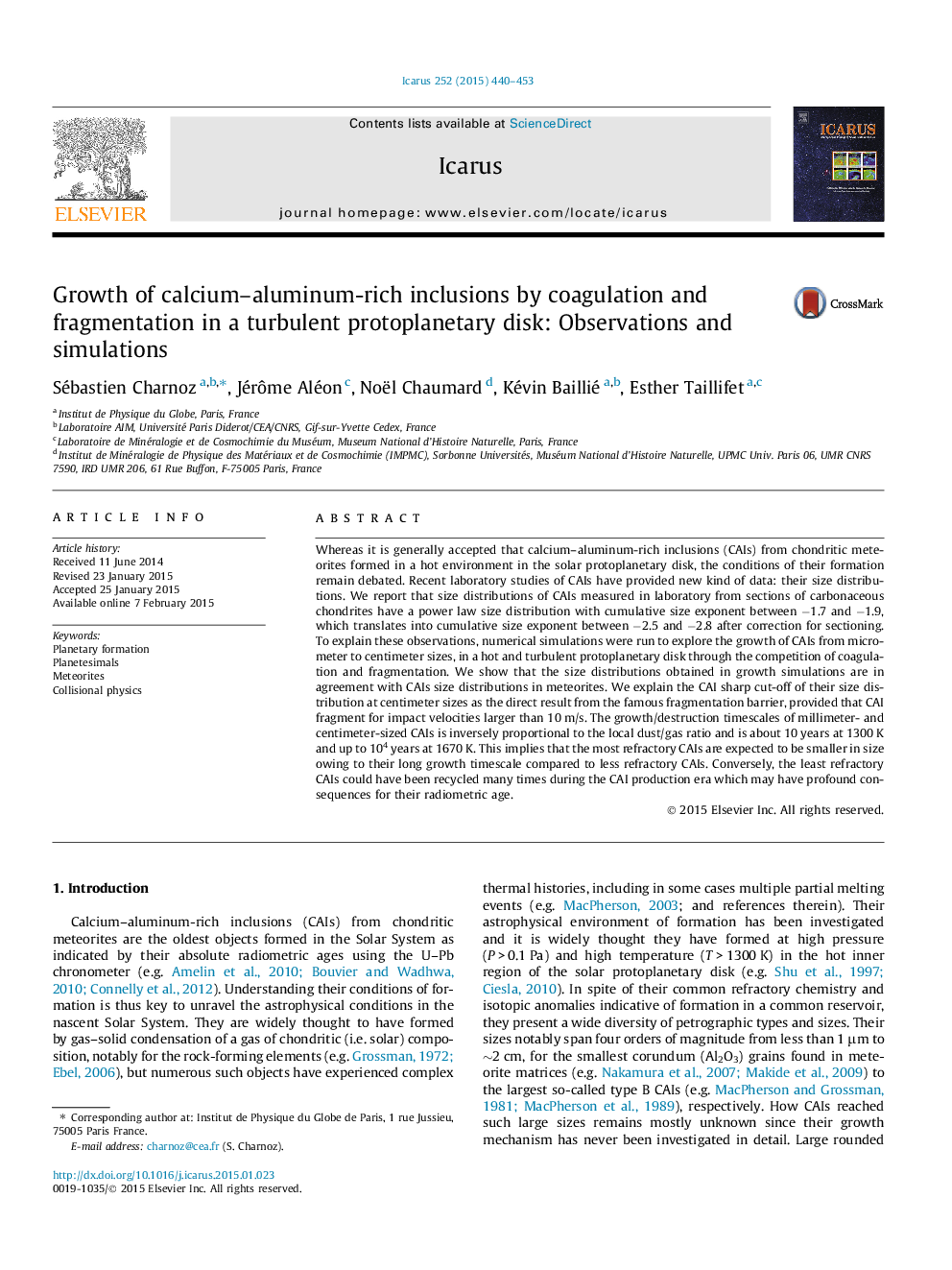| کد مقاله | کد نشریه | سال انتشار | مقاله انگلیسی | نسخه تمام متن |
|---|---|---|---|---|
| 8136621 | 1523538 | 2015 | 14 صفحه PDF | دانلود رایگان |
عنوان انگلیسی مقاله ISI
Growth of calcium-aluminum-rich inclusions by coagulation and fragmentation in a turbulent protoplanetary disk: Observations and simulations
ترجمه فارسی عنوان
رشد غلظت غنی از کلسیم و آلومینیوم با انعقاد و قطعه شدن در یک دیسک پروپپلماتیک آشفته: مشاهدات و شبیه سازی
دانلود مقاله + سفارش ترجمه
دانلود مقاله ISI انگلیسی
رایگان برای ایرانیان
کلمات کلیدی
موضوعات مرتبط
مهندسی و علوم پایه
علوم زمین و سیارات
علوم فضا و نجوم
چکیده انگلیسی
Whereas it is generally accepted that calcium-aluminum-rich inclusions (CAIs) from chondritic meteorites formed in a hot environment in the solar protoplanetary disk, the conditions of their formation remain debated. Recent laboratory studies of CAIs have provided new kind of data: their size distributions. We report that size distributions of CAIs measured in laboratory from sections of carbonaceous chondrites have a power law size distribution with cumulative size exponent between â1.7 and â1.9, which translates into cumulative size exponent between â2.5 and â2.8 after correction for sectioning. To explain these observations, numerical simulations were run to explore the growth of CAIs from micrometer to centimeter sizes, in a hot and turbulent protoplanetary disk through the competition of coagulation and fragmentation. We show that the size distributions obtained in growth simulations are in agreement with CAIs size distributions in meteorites. We explain the CAI sharp cut-off of their size distribution at centimeter sizes as the direct result from the famous fragmentation barrier, provided that CAI fragment for impact velocities larger than 10Â m/s. The growth/destruction timescales of millimeter- and centimeter-sized CAIs is inversely proportional to the local dust/gas ratio and is about 10Â years at 1300Â K and up to 104Â years at 1670Â K. This implies that the most refractory CAIs are expected to be smaller in size owing to their long growth timescale compared to less refractory CAIs. Conversely, the least refractory CAIs could have been recycled many times during the CAI production era which may have profound consequences for their radiometric age.
ناشر
Database: Elsevier - ScienceDirect (ساینس دایرکت)
Journal: Icarus - Volume 252, 15 May 2015, Pages 440-453
Journal: Icarus - Volume 252, 15 May 2015, Pages 440-453
نویسندگان
Sébastien Charnoz, Jérôme Aléon, Noël Chaumard, Kévin Baillié, Esther Taillifet,
